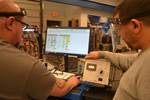
Steve Johnson and Glenn Keith of Mold Trax have been longtime supporters and contributors to MMT on everything mold maintenance (you can check out the latest 3-part series as well as the Maintenance Matters and Across the Bench series of content that provides valuable information on a topic that gets searched a lot on MMT’s site). In this hour-long virtual workshop, they break down one important component of continuous improvement: Documentation Strategy.
The goal is to provide viewers a better understanding of how their toolrooms are doing when it comes to their mold maintenance documentation by walking you through a “scorecard” that tests your maintenance 4.0 status. This scorecard then becomes your action plan to get started with improving your score. And, Mold Trax is here to help.
“In any mold performance and shop efficiency improvement initiative, there must be a plan of action. Attempting to do a better job of collecting data is futile without an implementation/action plan to determine data input responsibilities,” Johnson says.
His first step is to get your team to speak the same language by creating standard terms for Mold Stop Reasons, Defects, Corrective Actions and Tooling. Once these are created, you must work with your IT, CMMS or Work Order system provider to get these terms into your system via drop-down boxes. The drop-down boxes are critical to limit the amount of journal entries, and to ensure measurable data.
Standardization of shop practices must go beyond the hands-on techniques that we learn at a bench. It must also include our documentation methods and how we interact with data to understand where our opportunity lies for improvement.
Watch this virtual on-demand webinar for free here:
Related Content
-
How to Use Scientific Maintenance for More Accurate Mold and Part Troubleshooting
Discover how adopting scientific maintenance approaches helps improve mold lifespan, minimize failures, and optimize production outcomes.
-
Hands-on Workshop Teaches Mold Maintenance Process
Intensive workshop teaches the process of mold maintenance to help put an end to the firefighting culture of many toolrooms.
-
How to Overcome Complex Mold Texturing Problems
Key benefits when considering laser technology for mold texturing and repair.
















